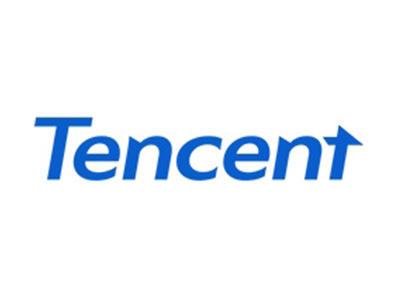腾讯控股(00700.HK)2024年第四季度及全年业绩电话会
文章语言:
简
繁
EN
Share
Minutes
原文
会议摘要
Tencent has reported strong financial results with double-digit revenue growth, thanks to strategic investments in AI. The company focuses on high-value AI applications such as developing foundation models and integrating them into cloud services, which has led to increased user engagement, improved enterprise offerings, and potential changes to monetization strategies. One noteworthy success is the AI-powered app Yuanbao, which has gained significant popularity, showcasing Tencent's dedication to using AI innovation to achieve a balance between growth and profitability.
会议速览
Tencent Holdings Limited reported its fourth quarter and annual results for 2024, showcasing improvements in key services, developments in AI, growth in gaming, video, music, and marketing services, as well as enhancements in FinTech. The company also emphasized its commitment to providing returns to shareholders through dividends and share buybacks.
Tencent has reported an 11% year-on-year increase in fourth-quarter revenue to 172 billion RMB, with a 30% rise in non-IFRS net profit. The company has emphasized its significant investments in AI, such as the development of the Hu Yuan Foundation model, multi-model strategies for optimal user experiences, and AI integration into enterprise services. Tencent has also mentioned the acceleration of AI in cloud services and its impact on revenue growth.
The company emphasizes the significant returns gained from incorporating AI into its advertising, gaming, and media services, resulting in higher user engagement, revenue growth, and improved efficiency in content creation. It outlines the progress made in implementing AI since 2015, the restructuring of AI teams, and the proposal for substantial increases in capital expenditures and investments in research and development by 2025, in addition to commitments to return capital to shareholders.
In the fourth quarter, Tencent reported a return to double-digit revenue growth, up 11% year-on-year, with strong contributions from domestic games, video accounts, advertising, and cloud services. Gross profit grew 17% year-on-year, driven by high-margin revenue streams and cost efficiency. The company highlighted successes in social networks, domestic and international games, marketing services, and FinTech and business services, noting particularly robust performances in music subscriptions, long-form video subscriptions, and Evergreen games. Tencent also emphasized innovations in mini-games platforms, search services, and AI-enhanced advertising platforms, alongside growth in FinTech services and business services revenue.
In the fourth quarter of 2024, the company reported a total revenue of 172.4 billion RMB, an 11% increase year-on-year. The gross profit was 19.7 billion RMB, up 17% year-on-year. Operating profit saw a significant increase of 24% year-on-year, reaching 51.5 billion RMB. Key financial highlights include stable interest income, reduced finance costs due to exchange gains, and a substantial increase in share profit of associates and joint ventures. Diluted earnings per share grew by 33% year-on-year to 5.91 RMB, outpacing non-IFRS net profit growth. Non-IFRS operating profit reached 59.5 billion RMB, increasing by 21% year-on-year, and net profit attributable to equity holders rose to 55.3 billion RMB, up 30% year-on-year. The gross margin improved to 53%, with segment-specific margins showing growth. Operating expenses decreased, while research and development expenses increased, reflecting investment in AI initiatives. Non-IFRS operating margin expanded to 34%, a 3-percentage point increase year-on-year.
Operating CapEx increased by 421% year-on-year to 34.9 billion RMB, driven by increased investments in GPUs and AI capabilities. Total CapEx rose by 386% year-on-year to 36.6 billion RMB, mainly due to data center construction. Free cash flow decreased by 87% year-on-year to 4.5 billion RMB, as a result of higher CapEx spending on GPUs, servers, and other expenses. The net cash position decreased by 20% quarter-on-quarter to 705.6 billion RMB. In 2024, the company repurchased 307 million shares for HK$112 billion, doubling the number of shares and total consideration from the previous year. A proposed annual dividend of HK$4.5 per share represents a 32% increase from the previous year.
The conversation is centered around how to manage the financial effects of investing more in AI technology on the company's margins and profitability, as well as questions about the company's e-commerce strategy after successful recent projects.
The company is addressing concerns about the rising costs caused by increased spending on research and development for artificial intelligence and higher capital expenditures. They are emphasizing that these investments are generating good margins and high returns, especially in advertising technology, gaming, and cloud computing businesses. They are highlighting improvements in the efficiency of graphics processing units for training large language models and anticipate making money from two specific activities related to inference through advertising revenue and value-added services. Their goal is to protect margins despite short-term cost pressures.
The discussion highlights the long-term initiative of developing a unified platform, called the mini shop, which aims to connect all components of the shopping ecosystem. This ecosystem includes social infrastructure, content, search, merchant programs, transaction platforms, and more, designed to help consumers easily find high-quality products and merchants. Key strategies include reducing costs through software and better algorithms, using the gifting feature during important times like Chinese New Year to boost word-of-mouth promotion, and creating a delivery map from user addresses to facilitate smoother transactions. The platform is experiencing rapid growth, with positive feedback from both consumers and merchants, underscoring a gradual approach to building and expanding the ecosystem over time.
The management is discussing the high demand for AI services targeted at businesses, but limited by a lack of supply, and they are making plans to expand their software solutions. They are also talking about the changing landscape of AI applications for consumers, focusing on growth, diversification, and integrating the technology into different products to improve user experiences.
The management is discussing strategies to increase the user base for their AI chatbot and search service, focusing on innovation, providing access to high-quality content, and implementing a multi-model strategy. They are also considering the possibilities for AI search to outperform traditional search methods and are outlining plans to generate revenue through subscription models and performance advertising.
The discussion delves into the possibilities of using AI technology to boost growth in marketing services more quickly, citing a strong 17% growth rate and the positive effects of machine learning seen in other countries. It also questions the expected growth in both domestic and international markets for the upcoming year, taking into account the higher starting point for domestic markets in the second half of the year and the influence of AI in the gaming industry.
The company saw a significant increase in advertising growth in the fourth quarter, thanks to AI improvements that provided better return on investment for advertisers. In the gaming industry, despite worries about a higher starting point, the company is showing potential with rising deferred revenue, expanding user bases for popular games, and the possibility of using AI to improve game development and user experience, aligning with the strategy for long-lasting games.
The inquiry examines the change in commercial payment revenue from declining to stable growth in the past few quarters, aiming to understand the trends in Q1 2025. It also looks into the reasons behind the company's recommended ratio of capital expenditure to revenue, inquiring whether it suggests a decrease in demand for AI or if the previous year's growth will satisfy current needs.
The observations point out a growth in commercial transaction levels despite pricing pressures, suggesting a difficult yet potentially improving market. There are also talks about the strategic management of capital expenditure (CapEx), with an emphasis on the effective use of resources such as GPU servers to meet demands like artificial intelligence, while also staying adaptable to market changes.
The company saw growth in advertising revenue from different industries such as e-commerce, finance, and education. AI improvements were first implemented in video accounts before being expanded to other platforms and the advertising network. The company's allocation of capital will focus on decreasing share buybacks compared to the previous year, increasing dividends, and possibly making investments in mergers and acquisitions due to high demand in the AI industry.
The speaker highlights a strategy that involves investing in AI for future profits while also ensuring the current value for shareholders by issuing dividends and buying back shares. They stress the importance of having a solid financial foundation and being able to adapt and invest further in AI technologies.
The discussion focuses on the company's goal of achieving growth of high quality and expanding margins, emphasizing the importance of utilizing gross margin leverage and the influence of new revenue streams with higher margins. Management elaborates on the current change in revenue mix that is leading to faster growth in gross profit compared to revenue, and anticipates continued leverage in gross profit despite reaching a plateau. The conversation also addresses the need for a balance when investing in artificial intelligence.
Translation: Un representante de City Securities felicita a AIA por su sólido trimestre e indaga sobre el progreso y los desarrollos de la compañía en inteligencia artificial, especialmente en modelos grandes.
AI asks for management's opinion on the key competitive factors that will impact the future of large models and requests more information on the organization's competitive advantages.
The discussion focuses on identifying competitive advantages in a crowded market with many competitors, emphasizing the importance of clarity on unique selling points.
The discussion focuses on methods for boosting user interaction by incorporating AI agents into different software platforms. It stresses the importance of using top-notch models and tapping into the existing ecosystems in apps such as browsers and social media. It also highlights the potential of AI agents to handle intricate tasks, enhance user satisfaction, and guarantee data safety and convenience. Additionally, it mentions the various user activities within platforms that present distinct benefits for AI integration.
要点回答
Q:What are the highlights of Tencent's fourth quarter and annual results for 2024?
A:The highlights of Tencent's 2024 fourth quarter and annual results include the launch of mini shops, an upgrade in video accounts, enhanced documentation algorithms, an increase in the Evergreen Games portfolio from 12 to 14 games, and Tencent Music maintaining its leadership with 121 million subscribers. The company's marketing services revenue outperformed the industry as they upgraded their advertising technology platform and increased user traffic. In the FinTech sector, they strengthened their risk control and optimized payment funding cost. The company also advanced in AI capabilities, deployed AI for internal use cases, and prepared for consumer AI use cases. Financially, revenue growth rates improved hitting double-digit growth in the fourth quarter, and they focused on delivering shareholder returns by paying out HK$32 billion in cash dividends and repurchasing HK$112 billion worth of shares during the year.
Q:¿Cuáles son los logros de Tencent en iniciativas de inteligencia artificial?
What are Tencent's achievements in AI initiatives?
A:Tencent's achievements in AI initiatives include the establishment of their AI lab in 2016, heavy investment in the proprietary Huyan foundation model since 2023, and the development of end-to-end foundation model capabilities in infrastructure, algorithm, training, alignment, and data management. They have customized solutions for different needs of internal and external use cases. The company created the Huyan T1 deep thinking model, one of the first of its kind in China, and several multimodal Huyan Foundation models with abilities spanning across image, video, and 3D generation. They have also contributed to the open source community by releasing a series of advanced models. Consumer-facing AI products utilize a multi-model strategy to offer the best AI experience and include 'Yuanbao,' which allows access to multiple models and processes prompts in various formats such as text, images, voice, and documents.
Q:How has the integration of AI benefited Tencent's consumer and enterprise-facing services?
A:The integration of AI has benefited Tencent's consumer-facing services by providing the best AI experience through a multi-model strategy, allowing the use of various models to handle complex tasks more effectively. The 'Yuanbao' application, which supports multimodal capabilities, has seen a 24% increase in daily active users and is now the third highest AI native mobile application in China. In enterprise-facing services, the integration of AI into the cloud business, infrastructure platform, and software as a service solutions has been accelerated, with AI-powered tools becoming increasingly popular. AI is also being utilized to optimize the advertising system, enhance PVP games, improve content production efficiency, and boost content discovery, resulting in positive returns for the company.
Q:¿Qué capacidades y modelos específicos de IA ha desarrollado Tencent?
A:Tencent has developed various AI capabilities and models, including the Huyan foundation model, the Huan Yuan T 1 deep thinking model, and multimodal Huyan Foundation models with image, video, and 3D generation capabilities. The Huyan T 1 model is on par with top-tier models, and the multimodal models have shown great performance in image, video, and 3D generation, receiving high scores in different evaluations. Tencent has also shared advanced models for 3D generation, video generation, large language, and image generation with the open-source community.
Q:How has the integration of AI affected Tencent's marketing services and games business?
A:The integration of AI has had a positive impact on Tencent's marketing services business, leading to a 20% increase in revenue in 2024 despite challenges in the gaming market. In the gaming sector, machine learning technology has been used in player-versus-player games to improve matchmaking, balance gameplay, and provide AI coaching for new players. The integration of advanced language models has also improved efficiency in 3D content production and enabled in-game chatbots for video and music services. These efforts have increased productivity and content creation, as well as enhanced content discovery, unlocking the full potential of content platforms.
Q:¿Cuánto planea comprar la empresa en términos de valor de acciones en 2025?
How much does the company plan to buy in terms of stock value in 2025?
A:The company plans to repurchase at least HK$80 billion worth of stock in 2025.
Q:¿Cuál fue el ingreso total para el cuarto trimestre y cuánto de él provino de cada subsegmento?
A:In the fourth quarter, the company's total revenue returned to double-digit growth, increasing by 11% year over year. Revenue was distributed across various sub-segments: social network (46%), domestic games (20%), international games (9%), marketing services (20%), and FinTech and business services (33%).
Q:Which game was responsible for the increase in revenue of domestic games in the fourth quarter?
A:The revenue from domestic games increased by 23% compared to the previous year, with major contributions from popular games such as 'Honor of Kings', 'Peacekeeper Elite', 'Valorant', as well as recently released games like 'DNF Mobile' and 'Delta Force'.
Q:How much did the gross profit increase year over year and which segments contributed to this growth?
A:The gross profit increased by 17% compared to the previous year, with Value Added Services (VAS) experiencing a 19% increase, accounting for 49% of the total gross profit. The gross profit from marketing services also increased by 19%, contributing 22%, while FinTech and business services saw an 11% increase, contributing 29%. The revenue for the value added service segment was 79 billion renminbi, up 14% year on year.
Q:What new feature did the mini shops platform introduce to increase new and repeat transactions?
A:The mini shops platform introduced a gifting feature to encourage new and repeat transactions, as well as to expand the delivery location map for future convenience and efficiency.
Q:Cómo creció el segmento de búsqueda y qué nuevas capacidades integró?
Translation: How did the search segment grow and what new capabilities did it integrate?
A:The search segment continued to grow rapidly in terms of queries and revenue, incorporating '10 cent' and advanced language model capabilities to improve the accuracy and quality of search results. Additionally, results powered by 10 cent's own model now account for over 90% of question-based searches for domestic games.
Q:What effect did IP collaborations and high-profile events have on Evergreen games in the fourth quarter?
A:Evergreen games saw an increase in revenue during the fourth quarter as a result of collaborations with intellectual properties and high-profile events. 'Honor of Kings' experienced a double-digit percentage growth in gross receipts compared to the previous year, while other titles also saw growth thanks to these events.
Q:Can you provide me with the revenue growth figures for marketing services and how artificial intelligence contributed to this growth?
A:Marketing services revenue in the fourth quarter increased by 17% to 35 billion renminbi. The growth was attributed to AI improvements that allowed for a better understanding of user behavior and responses to advertisements, resulting in more targeted ad recommendations. This, combined with increased user engagement, resulted in revenue growth across various industries and a 60% year-on-year increase in marketing services revenue.
Q:¿Cuál fue el crecimiento de los ingresos para el segmento de FinTech y servicios empresariales en el cuarto trimestre?
What was the revenue growth for the FinTech and business services segment in the fourth quarter?
A:The revenue for the FinTech and business services segment was 56 billion renminbi in the fourth quarter, up 3% year on year, with improved commercial payment volumes and wealth management and consumer loan services contributing to the growth. The segment's revenue growth was modest, but it benefited from higher cloud services revenue and increased technology services fees from rising e-commerce transaction volumes.
Q:What were the total financial results for the fourth quarter, as stated in the transcript?
A:In the fourth quarter, total revenue was 172.4 billion renminbi, up 11% year on year, gross profit was 19.7 billion renminbi, up 17% year on year, operating profit was 51.5 billion renminbi, up 24% year on year, and diluted EPS was 5.91 renbi, up 33% year on year.
Q:What are the factors driving the increase in operating capital expenditures and revenue?
A:The increase in operating capital expenditures was due to increased investment in GPUs, servers, and other sensors to enhance AI capabilities. The 103% year-on-year revenue growth was mainly a result of ongoing data center construction.
Q:¿Cómo espera la empresa equilibrar el crecimiento y las mejoras de rentabilidad a medida que aumenta la inversión en CapEx de IA?
How does the company expect to balance growth and profitability improvements as AI CapEx increases?
A:The company does not see R&D spending as a strain on profits and is confident that any negative impact on margins from additional depreciation and R&D expenses can be controlled. They are hopeful that the business can still expand while maintaining margins, as the increased capital expenditures will be used effectively and yield positive or high returns, especially from GPU support for advertising technology and gaming businesses.
Q:Can management share the strategy and key initiatives for e-commerce this year?
A:The e-commerce strategy involves a unified platform called Mini Shop, which is part of a long-term initiative to develop the ecosystem. Mini Shop serves as a social component and facilitates gifting, connecting various elements such as social infrastructure, content, search, programs, and a transaction platform to enhance product discovery. Initial feedback on Mini Shop has been favorable, with successful gifting functions during Chinese New Year helping to establish an infrastructure for smoother transactions.
Q:What is the current status of the demand for AI services and what is the forecast for future demand?
A:The demand for AI services is very high, and the company is currently experiencing limitations in supply, which is shown in the significant increase in capital expenditures for GPUs required for both inference and cloud services. While not all of this demand could be met in the first quarter, it is anticipated that with the arrival and installation of the GPUs, a large portion of this increased demand will be accommodated in the future.
Q:Can you provide us with the growth trends and revenue contribution of Tencent's SaaS product in English?
A:Tencent's SaaS products, Tencent Meeting and Tencent Docs, are their highest revenue-generating SaaS products and have experienced significant growth, with revenue doubling year on year in the previous quarter.
Q:How is the integration of AI expected to improve products and what consumer applications can be anticipated?
A:AI integration is expected to transform each product into more powerful tools, such as a robust AI native assistant and a collaborative library for teams. Products like Emma Copilot will act as personal and team collaboration hubs. Consumers can anticipate more AI-focused products, including AI features in consumer-facing applications like QQ and web browsers.
Q:What is the strategy for growing the user base of AI-powered 'yuanbao'?
A:Yuanbao is more than just a gateway; it also includes a variety of functions. The strategy is to find specific use cases where AI can improve user experience for various types of users. The products will collaborate to help expand the user base of AI products.
Q:Yuanbao is a traditional Chinese currency that dates back to ancient times and has been used as a form of money in China for centuries. The potential applications of yuanbao today include being used as a collectible item, as a decorative piece, and even as a symbol of wealth and prosperity. Its unique advantages lie in its historical and cultural significance, as well as its aesthetic appeal.
A:Yuanbao's applications have a wide range of uses, including serving students, knowledge workers, and researchers. Its unique advantage is its access to high-quality content ecosystems and a multi-model strategy that meets the needs of complex users. Future integration with other Pau products is expected to be beneficial as well.
Q:How does AI search compare to traditional search and what are the strategies for generating revenue from it?
A:AI search is viewed as an advancement of conventional search, providing new technology, efficiency, and transactional capabilities through autonomous AI. Monetization tactics may differ by location, beginning with performance advertising in China, and possibly extending to value-added services. In Western countries, monetization is typically accomplished through subscription models, followed by performance advertising.
Q:What are the expectations for growth in the advertising and gaming industry for the next year?
A:The advertising industry saw strong growth, surpassing other industries, thanks to AI improvements that provided better returns for advertisers. The gaming industry is expected to face challenges in the second half of the year due to past revenue contributions. Positive signs include higher deferred revenue, more daily active users in top-grossing games during Chinese New Year, and the possibility of some games becoming long-lasting successes. The upcoming release of new games and the indirect benefits of AI advancements are expected to drive future growth. Other factors like the popularity of games such as Delta Force and the industry's embrace of AI are also being taken into account.
Q:What are the advantages of integrating AI in the production of evergreen games?
A:The integration of AI in production for evergreen games allows for high-quality content to be created in a shorter period of time, enabling more frequent updates to the games. This improves the player versus environment (PVE) experience with smarter bots and enhances player versus player (PVP) gameplay through better matching and balancing of new users, making the games more popular and appealing.
Q:What is the speaker's observation about the growth in revenue from commercial payments in the fourth quarter?
A:The speaker notes that although the number of transactions for commercial payments has gone up, the average selling price (ASP) remains under pressure, leading to stagnant overall value. Consumers are starting to spend more, but suppliers are still facing pricing challenges, suggesting the end of a difficult market. As consumer demand strengthens, suppliers may lower costs, ultimately leading to value growth.
Q:What is the reason for the expected decrease in capital expenditure growth?
A:The expected decrease in CapEx growth is due to the belief that the increase in spending in late 2024 will be sufficient to meet the AI and other needs in 2025. The delay between ordering GPU servers and fully deploying them in data centers affected the fourth quarter and part of the first quarter. However, deployment of GPUs has now started, which will benefit both internal inference needs and external Tencent Cloud needs, leading to direct revenue generation. The company's CapEx has been focusing on efficiency and utilization, without hindering technology development effectiveness.
Q:What is the priority for allocating capital, and how should investors evaluate M&A investments in the current AI industry environment?
A:The main focus for how money is spent is on investing in areas that will bring a profit to the company and its shareholders. This includes finding a balance between investing in AI technology and giving money back to shareholders through dividends and share buybacks. The company wants to develop a strategy that both invests in the future and provides immediate returns. The company's financial stability, which includes a strong cash flow, a valuable investment portfolio, and liquidity, reinforces this approach. When it comes to mergers and acquisitions, the main emphasis is still on potential profits and aligning with the company's strategic objectives.
Q:Which industries have experienced a rise in advertising revenue, and how has this impacted advertisers' behavior?
A:Industries that have experienced a growth in advertising revenue year after year include e-commerce, financial services, fast-moving consumer goods, gaming, local services, education, and healthcare. The advantages of AI improvements were initially seen in video accounts and are now spreading to other areas and the advertising network, ultimately leading to greater benefits over time. Advertisers' actions have been influenced positively, leading to an increase in advertising revenue.
Q:What factors have contributed to the company's increase in operating margin in the past two years?
A:The company's increased operating margin over the past two years is mainly attributed to the increase in gross profit, which occurred as a result of a shift in revenue towards higher-margin streams such as video ads, search ads, value-added financial services, e-commerce transaction fees, and the company's own games. These high-quality revenue streams grew at a faster rate than overall revenue and led to significantly higher margins.
Q:How could the introduction of AI affect the company's future competitive position?
A:The introduction of AI could impact the company's competitive position by shaping the future capabilities of vast models. The company sees various types of AI agents as part of this landscape, which are essentially models with built-in software tools to perform intricate tasks. The company believes its competitive edge lies in its capacity to create independent AI agents utilizing top-notch models and utilize its wide consumer base across different platforms, such as the browser and WeChat, as well as the diverse ecosystem within WeChat for engaging users.
Q:What advantages does the company have in developing AI agents and integrating them into its ecosystem?
A:The company has several advantages in developing AI agents and integrating them into its ecosystem. These include the ability to create standalone AI agents using high-quality models and a large user base across multiple platforms. Additionally, the company benefits from the variety of activities within its ecosystem, such as social communication, content creation, work, learning, and transactions. This enables the integration of mini-programs and makes complex tasks easier for users. Furthermore, the company prioritizes user data security and comfort in the development of these AI products.

TENCENT
Follow





